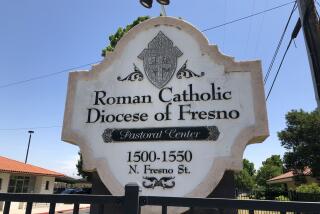Cost-Cutting in Diocese Turns Debt to Surplus
- Share via
CHICAGO — Resurrection is not exactly a new topic in religious circles, but, to the delight of Roman Catholic officials here, the term seems to be taking on a financial, as well as spiritual, dimension.
With the nation’s second-largest archdiocese drowning in a sea of red ink, Cardinal Joseph L. Bernardin shocked parishioners in 1990 by announcing the most sweeping cost-cutting measures ever attempted in the history of the Catholic Church in America.
Over the protests of many of the 2.6 million Roman Catholics in the Chicago metropolitan area, more than 50 schools and churches have been shut down within two years. Tuitions have been jacked up 16% and numerous church real estate holdings sold.
“No margin, no mission,” said Jack Benware, chief financial officer for the archdiocese, explaining the reasoning behind the retrenchment. “It’s the reality of the world we live in.”
Systemic problems that drained church resources in Chicago for many years are little different from those still plaguing Los Angeles, New York and other urban dioceses. Changing demographic and housing patterns have squeezed church membership.
Meanwhile, fewer young people are joining the clergy, so Catholic schools, churches and missions have had to hire more lay people for jobs once performed by priests and nuns.
The dramatic turnaround in the bottom line of the church here could encourage other cash-strapped dioceses to emulate Chicago’s hard-nosed approach to fiscal revival.
Recession notwithstanding, archdiocese operations rebounded from a $26-million deficit in 1989 to a surplus of more than $6 million in 1991, the first year in many that church finances have ended up in the black.
Just as significant, authorities have been able to whittle down the debt by nearly two-thirds, to $6 million from $17 million. Two years ago, analysts were warning that, short of drastic austerity measures similar to those ultimately taken, the archdiocese would find itself as much as $128 million in hock by the mid-1990s.
At the time the cutbacks were announced, critics called them cruel and heartless and warned that they were doomed to backfire--to drive the faithful away from collection boxes, parochial schools and the church in general. Clearly, that has not been the case, although school enrollment is down slightly and, with fewer parishes to serve the faithful, officials admit they have no idea whether overall church attendance has dipped.
However distasteful the notion of trimming church services, Benware insisted that it was an evil necessary to keep the bottom from falling out of the church treasury and forcing even more severe cuts down the road.
“We may have been an early warning sign for other dioceses,” he said. “The fact that we faced up to it and took some pretty stringent actions might help them recognize that if they do it now it won’t be so bad. If they wait three years, they’ll be faced with a far more serious problem.”
Even so, church leaders here admitted that they are not totally out of the woods yet. Preliminary data indicate that the take from Sunday collections has started dropping in recent months, a sign that a major source of church revenue could once again take a hit as the recession pinches more worshipers.
“It’s like going on a diet,” said archdiocese spokeswoman Joy Clough of the austerity drive. “It’s one thing to lose weight, and another thing to keep it off.”
More to Read
Sign up for Essential California
The most important California stories and recommendations in your inbox every morning.
You may occasionally receive promotional content from the Los Angeles Times.













